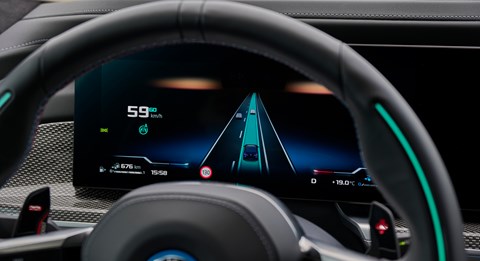► We try BMW’s personal pilot
► A £5200 option on the new 7-series
► Tested in the Czech Republic
The step from Level 2 to Level 3 self-driving cars is small on paper but hugely significant on the road. Much discussed over the past decade, ‘eyes-off’ systems have not materialised on schedule. Remember the Audi A8 promising Level 3 readiness back in 2017, only to be hit by regulation roadblocks?
But 2024 looks like being the year when it really happens, at least in some countries. BMW has just launched its Personal Pilot L3 as a €6000 (£5200) option on the 7-series in Germany, although it’s not yet approved for use in the UK. We tested it at the company’s new autonomous driving R&D base at Sokolov in the Czech Republic.

A quick recap on the autonomous terminology, which is based on Society of Automotive Engineers guidelines. The L3 bit of the BMW system’s name refers to Level 3, which means ‘conditional automation’ – a mode that lets all aspects of driving be done for you, but the driver must be on hand to intervene. Envisage a ‘driverless’ car – a fully autonomous robocab – and you’re thinking of Level 5. That is some way off; the reality is that human/machine handovers will be the norm for a while yet. And that’s exactly where this latest upgrade to Personal Pilot sits.
We jump into an i7, select a YouTube video on the infotainment and pull out to join a throng of cars on a simulated motorway. Once cameras and sensors confirm we are on a suitable highway, the Personal Pilot button illuminates on the steering wheel. One tap, then audio and visual confirmation, and the car takes over.

I watch the TV screen, hands off the wheel. It’s uncanny, and I’m unnerved that the i7 tracking my eye movement and steering inputs doesn’t intervene. I’ve ceded control to a machine, and it feels odd to my core. We drive along for several minutes, the car modulating its speed and steering to stay in lane and keep its distance from cars manoeuvring around it.

Suddenly, the i7 encounters a cardboard box in the lane ahead, unnoticed by me. The car comes to a halt safely and I’m alerted by warning lights and sounds. It works correctly, but I’m left with many doubts about how well this will work on real roads used by vehicles with many different degrees of assistance. The cars are taking over, but do we really want them to?